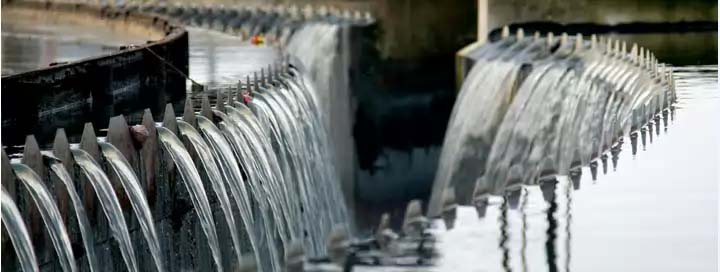The search for clean drinking water is a pursuit as old as humanity itself. With an ever-increasing population, the pursuit for clean water has required more innovative approaches. The following are examples of water purification systems used by New Orleans, Louisiana and Silicon Valley, California.
A Louisiana Example
The Carrollton Plant in Louisiana uses an elaborate process to treat water from the Mississippi river. River water entering the plant is first treated with ferric sulfate and polyelectrolyte. The addition of these chemicals marks the first step of the water purification process, called coagulation. Just as the body coagulates blood when injured, these chemicals cause the suspended solids of the river water to bond together.
In the next stage, flocculation, these bonded suspended solids are then mixed mechanically to form larger and more dense particles heavy enough to sink to the bottom of the water. The third stage of the process is known as sedimentation. In sedimentation, the river water flows into primary settling basins. The particles formed by coagulation and flocculation settle to the bottom of the basins, leaving the purer water to flow through the remaining steps of the process. The residue that collects at the bottom of the basins takes the form of sludge and is sometime reintroduced to the river.
The clear water leaves the basins and undergoes the next stage, disinfection. During disinfection, the water is treated by chlorine and ammonia. This treated water stays in a secondary basin for a period of time to allow the disinfection process to complete. The disinfected water then enters the fifth stage, where the water’s pH is adjusted. Calcium oxide, commonly known as lime, is added to the water in order to achieve the desired pH. Controlling pH is important in order to prevent water from being too corrosive, which can damage plumbing.
Besides pH treatment, the water also undergoes fluoridation after it leaves the secondary basins. Fluorosilicic acid is added to fluoridate the water, which helps prevent dental cavities. The final stage of the process is filtration. Granular media, such as sand or anthracite, is used to remove any remaining suspended particles.
A Silicon Valley Example
A more technologically advanced form of water purification is used by the Silicon Valley Advanced Water Purification Center, the largest advanced wastewater treatment center in Northern California. To start, the treated wastewater undergoes microfiltration, which is accomplished through the use of modules made of microscopic tubules. These modules act as filters, with the microscopic tubules trapping particles, microbes, and some viruses as the water passes through them.
The water then undergoes further filtration through reverse osmosis. The membranes used in this part of the process are so specialized that only water molecules can pass through them. Larger molecular structures, such as salts, most contaminants, pharmaceuticals, and pesticides, are trapped, further purifying the water. The final stage of the water purification process uses ultraviolet light. The use of ultraviolet light is for added protection, though the water is already considered safe upon reaching this stage. Powerful beams of ultraviolet light pass through the water in order to destroy any remaining organic compounds.
Byline
Along with water purification, Mitch Dorsey writes on other assorted eco topics such as water treatment, reservoirs, reverse osmosis membranes, environmental science, conservation and other related matters.
Image credit goes to anjilina.j.





